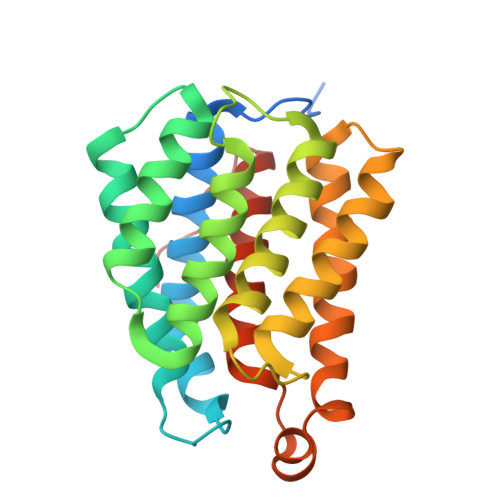Molecular insights into the structure and function of the Staphylococcus aureus fatty acid kinase.
Myers, M.J., Xu, Z., Ryan, B.J., DeMars, Z.R., Ridder, M.J., Johnson, D.K., Krute, C.N., Flynn, T.S., Kashipathy, M.M., Battaile, K.P., Schnicker, N., Lovell, S., Freudenthal, B.D., Bose, J.L.(2024) J Biol Chem : 107920-107920
- PubMed: 39454961
- DOI: https://doi.org/10.1016/j.jbc.2024.107920
- Primary Citation of Related Structures:
8VIP, 8VIQ, 8VIR, 8VIT - PubMed Abstract:
Gram-positive bacteria utilize a Fatty Acid Kinase (FAK) complex to harvest fatty acids from the environment. This complex consists of the fatty acid kinase, FakA, and an acyl carrier protein, FakB, and is known to impact virulence and disease outcomes. Despite some recent studies, there remains many outstanding questions as to the enzymatic mechanism and structure of FAK . To better address this gap in knowledge, we used a combination of modeling, biochemical, and cell-based approaches to build on prior proposed models and identify critical details of FAK activity. Using bio-layer interferometry, we demonstrated nanomolar affinity between FakA and FakB that also indicates that FakA is dimer when binding FakB. Additionally, targeted mutagenesis of the FakA Middle domain demonstrates it possesses a metal binding pocket that is critical for FakA dimer stability and FAK function in vitro and in vivo. Lastly, we solved structures of the apo and ligand-bound FakA kinase domain to capture the molecular changes in the protein following ATP binding and hydrolysis. Together, these data provide critical insight into the structure and function of the FAK complex which is essential for understanding its mechanism.
Organizational Affiliation:
Department of Microbiology, Molecular Genetics and Immunology, University of Kansas Medical Center, Kansas City, Kansas, USA.

















